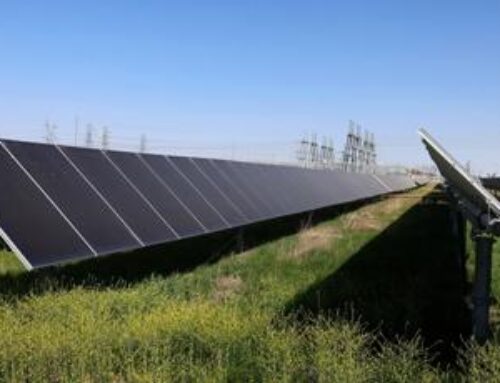Everyone’s Favorite Energy Cost Metric Is Wrong, Environmental Group Says
June 10, 2025
Forgive me, for I have cited the levelized cost of energy.
That’s what I was thinking as I spoke with Kasparas Spokas, one of the co-authors of a new paper from the Clean Air Task Force that examines this popular and widely cited cost metric — and found it wanting.
Levelized cost of energy, or LCOE, is a simple calculation: You take a generator, like a solar panel (with a discount for future costs), and add up its operating and capital expenditures, and then divide by the expected energy output over the life of the project (also discounted).
LCOE has helped underline the economic and popular case for renewables, especially solar. And it’s cited everywhere. The investment bank Lazard produces an influential annual report comparing the LCOE of different generation sources; the latest iteration puts utility-scale solar as low as $29 per megawatt-hour, while nuclear can be as high as $222. Environmental groups cite LCOE in submissions to utilities regulators. Wall Street analysts use it to project costs. And journalists, including me, will cite it to compare the cost of, say, solar panels to natural gas.
We probably shouldn’t, according to Spokas — or at least we should be more clear about what LCOE actually means.
“We continue to see levelized cost of electricity being used in ways that we think are not ideal or not adequate to what its capabilities are,” Spokas told me.
The report argues that LCOE “is not an appropriate tool to use in the context of long-term planning and policymaking for deep decarbonization” because it doesn’t take into account factors that real-world grids and grid planners also have to consider, such as when the generator is available, whether the generator has inertia, and what supporting infrastructure (including transmission and distribution lines) a generator needs to supply power to customers.
We see these limitations and constraints on real-life grids all the time, for instance in the infamous solar “duck curve.” During the middle of the day, when the sun is highest, non-solar generation can become essentially unnecessary on a solar-heavy grid. But these grids can run into problems as the sun goes down but electricity demand persists. In this type of grid, additional solar may be low cost, but also low value — it gives you electricity when you need it the least.
“If you’re building a lot of solar in the Southwest, at some point you’ll get to the point where you have enough solar during the day that if you build an incremental amount of solar, it’s not going to be valuable,” Spokas said. To make additional panels useful, you’d have to add battery storage, increasing the electricity’s real-world cost.
Looking for new spots for renewables also amps up conflict over land use and provides more opportunities for political opposition, a cost that LCOE can’t capture. And a renewables-heavy grid can require investments in energy transmission capacity that other kinds of generation do not — you can put a gas-fired power plant wherever you can buy land and get permission, whereas utility-scale solar or wind has to be where it’s sunny or windy.
“The trend is, the more renewable penetration you have, the more costly meeting a firm demand with renewables and storage becomes,” Spokas said.
Those real-world pressures are now far more salient to grid planners than they were earlier this century, when LCOE became a popular metric to compare different types of generators.
“The rise of LCOE’s popularity to evaluate technology competitiveness also coincided with a period of stagnant load growth in the United States and Europe,” the report says. When there was sufficient generation capacity that could be ramped up and down as needed, “the need to consider various system needs and costs, such as additional transmission or firm capacity needs was relatively low.”
This is not the world we’re in today.
Demand for electricity is rising again, and the question for grid planners and policymakers now is less how to replace fossil generators going offline, and more how to meet new electricity demand in a way that can also meet society’s varied goals for cost and sustainability.
This doesn’t always have to mean maxing out new generation — it can also mean making large sources of electricity load more flexible — but it does mean making more difficult, more considered choices that take in the grid as a whole into account.
When I asked Spokas whether grid operators and grid planners needed to read this report, he chuckled and said no, they already know what’s in it. Electricity markets, as imperfect as they often are, recognize that not every megawatt is the same.
Electricity suppliers often get paid more for providing power when it’s most needed. In regions with what’s known as capacity markets, generators get paid in advance to guarantee they’ll be available when the grid needs them, a structure that ensures big payouts to coal, gas, and nuclear generators. In markets that don’t have that kind of advance planning, like Texas’ ERCOT, dispatchable generators (often batteries) can get paid for providing so-called “ancillary services,” meeting short term power needs to keep the grid in balance — a service that batteries are often ideally placed to provide.
When grid planners look at the entirety of a system, they often — to the chagrin of many renewables advocates — tend to be less enthusiastic about renewables for decarbonizing the energy system than many environmental groups, advocates, and lawmakers.
The CATF report points to Ontario, Canada where the independent system operator concluded that building a new 300-megawatt small modular nuclear reactor — practically the definition of high LCOE generation, not least because such a thing has never been deployed before in North America — would actually be less risky for electricity costs than building more battery-supported wind and solar, according to the Globe and Mail. Ontario regulators recently granted a construction license to the SMR project, which is part of a larger scheme to install four small reactors, for a total 1.2 gigawatts of capacity. To provide the equivalent supply of renewable energy would require adding between 5.6 and 8.9 gigawatts of wind and solar capacity, plus new transmission infrastructure, the system operator said, which could drive up prices higher than those for advanced nuclear.
None of this is to say that we should abandon LCOE entirely. The best use case, the report argues, is for comparing costs for the same technology over time, not comparing different technologies in the present or future. And here the familiar case for solar — that its cost has fallen dramatically over time — is borne out.
Broadly speaking, CATF calls for “decarbonization policy, industry strategy, and public debate” to take a more “holistic approach” to estimating cost for new sources of electricity generation. Policymakers “should rely on jurisdiction-specific system-level analysis where possible. Such analysis would consider all the system costs required to ensure a reliable and resilient power system and would capture infrastructure cost tradeoffs over long and uncertain-time horizons,” the report says.
As Spokas told me, none of this is new. So why the focus now?
CATF is catching a wave. Many policymakers, grid planners, and electricity buyers have already learned to appreciate all kinds of megawatts, not just the marginally cheapest one. Large technology companies are signing expensive power purchase agreements to keep nuclear power plants open or even revive them, diving into the development of new nuclear power and buying next-generation geothermal in the hope of spurring further commercialization.
Google and Microsoft have embraced a form of emissions accounting that practically begs for clean firm resources, as they try to match every hour of electricity they use with a non-emitting resource.
And it’s possible that clean firm resources could get better treatment than theycurrently get in the reconciliation bill working its way through Congress. Secretary of Energy Chris Wright recently called for tax credits for “baseload” power sources like geothermal and nuclear to persist through 2031, according to Foundation for American Innovation infrastructure director Thomas Hochman.
“It’s not our intention to try to somehow remove incentives for renewables specifically, but to the extent that we can preserve what we can, we’re happy if it would be used in that way,” Spokas said.
When I asked Spokas who most needed to read this report, he replied frankly, “I think climate advocates would be in that bucket. I think policymakers that have a less technical background would also be in that bucket, and media that have a less technical background would also be in there.”
I’ll keep that in mind.
Search
RECENT PRESS RELEASES
Related Post



